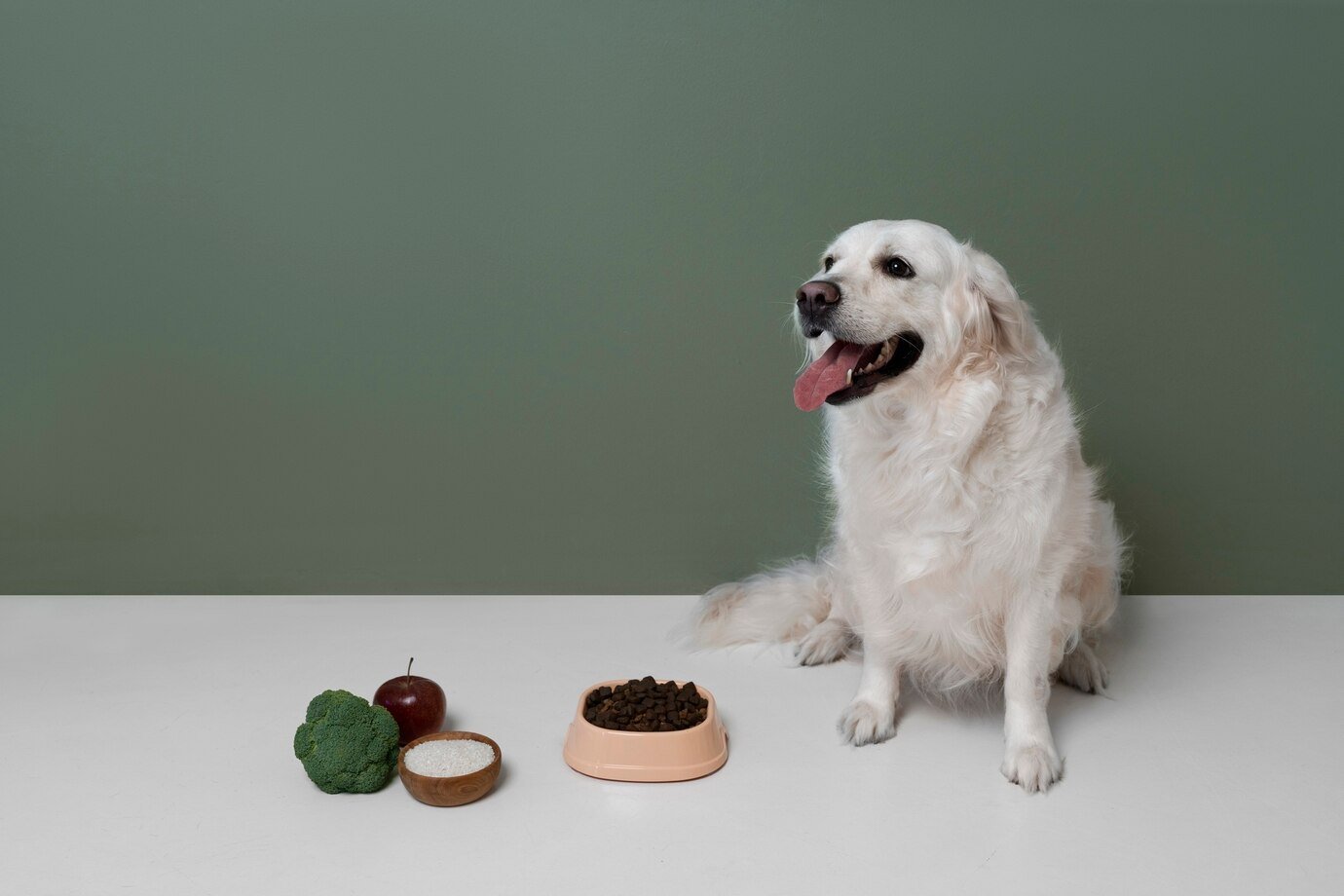How to Help Your Overweight Dog Lose Weight
Category
Categories

How to Help Your Overweight Dog Lose Weight
Helping Your Overweight Dog Shed Pounds
The Rise of Obesity in Dogs
In modern times, canines are experiencing a surge in weight gain. Current statistics reveal that a staggering 45% of dogs in the United States are classified as either overweight or obese.1
This alarming figure equates to a staggering 35 million dogs grappling with excess weight.
Moreover, the repercussions of obesity in dogs can be dire, posing a serious threat to their well-being. An obese dog is at a heightened risk of encountering debilitating health issues such as…
Add Two Extra Years to Your Dog’s Life
A recent study has demonstrated that dogs who maintain their ideal body weight have a lifespan that is nearly two years longer, along with a reduced risk of developing various diseases, compared to their overweight counterparts.2
Being overweight can lead to a premature death in dogs.
In essence, by ensuring that your dog maintains its optimal weight, you can potentially increase its lifespan by almost two years.
A Sedentary Lifestyle
Regrettably, many individuals fail to identify an overweight dog.
Vets reveal that approximately half of the canines they treat are carrying excess weight, yet only 17% of pet guardians acknowledge this fact.
Admitting that an 80-pound dog is 20 pounds overweight can pose a challenge for pet owners, who may resist seeing beyond the label of being “big-boned.”
Frequently, pet owners struggle to comprehend their dog’s weight issue, often saying, “How can he be overweight? He barely eats.”
Obesity often signifies that our dogs lead a sedentary lifestyle, resembling couch potatoes consuming minimal calories and burning very few.
The Solution
The key to addressing obesity in dogs is straightforward. If they consume more calories than they burn, they will put on weight.
Therefore, to shed those extra pounds…
Your dog needs to reduce food intake — and increase physical activity
These simple steps are the foundation for successful weight loss. Additionally, engaging in physical activities with your dog can benefit both of you.
The Objective: Determining Your Dog’s Optimal Weight
Establishing Your Canine’s Ideal Weight
To begin, it is essential to identify your dog’s ideal weight. Seek guidance from your veterinarian to assist you in this process and to evaluate your pet for potential obesity-related issues…
You can also refer to the Association for Pet Obesity Prevention for recommended weight ranges tailored to individual breeds.
How to Determine Caloric Needs for Weight Loss
Once you establish your dog’s optimal weight, you can calculate the necessary daily calorie intake for weight reduction.
Utilize the Best Dog Foodz dog food calculator to ascertain this crucial figure.
Although most dogs will achieve consistent weight loss with this prescribed daily calorie intake, some may necessitate even fewer calories due to variables such as the dog’s age and activity level.
Challenges of Dog Food Labels
The Issue with Canine Diet Guidelines
Canine nutrition labels typically focus on weight maintenance rather than weight reduction. Adhering strictly to these recommendations may result in ongoing weight gain.
To effectively manage weight, understanding the caloric content per cup of food is essential. It is advisable to adjust feeding portions based on calorie intake.
In cases where a dog is significantly overweight, consulting a veterinarian is pivotal in devising a personalized weight loss regimen for the furry companion.
Improper Dog Feeding Practices
Many pet owners opt for the practice of free choice feeding, where food is constantly available for their dogs to eat at any time of the day. This approach allows the dog to eat whenever it pleases.
However, free choice feeding goes against the natural eating habits of mammals, including dogs. Similar to humans, dogs may end up eating out of boredom rather than actual hunger.
Furthermore, this feeding method can lead to irregular hormonal changes in dogs, complicating the process of weight management.
Feeding Your Dog: Portions and Timing
And the Correct Approach
A healthy feeding routine for a dog involves dividing their food into two to four small servings throughout the day. It is crucial that the total calorie intake from meals and treats align with the desired weight loss goals.
If maintaining this schedule proves challenging due to time constraints, consider utilizing programmable automatic feeders to ensure your pet receives the correct food portions consistently.
This method guarantees that your dog is fed only at designated times to support their overall well-being.
Accurate Measurement is Key
It is essential to accurately measure the amount of food your dog consumes. Avoid guessing and opt for an 8-ounce measuring cup instead of using a coffee cup or food scoop.
Ensure to serve the precise quantity of food as prescribed in your calculations for optimal nutrition.
Challenges with Typical
Canine Weight Loss Foods
While there is a wide array of dog foods available for weight loss, not all of them are effective. Products labeled as “diet”, “lite”, or “reduced-calorie” may not actually be the optimal choice.
Many of these formulas substitute meat with excessive carb fillers, resulting in a low-calorie, high-volume food that gives the illusion of fullness to your dog.
However, this feeling is short-lived. Some of these products lack flavor, and most of them lead to an increase in stool output.
Such options can leave dogs feeling constantly hungry, often causing them to gain weight as owners find it challenging to resist their persistent begging.
Furthermore, standard maintenance diets are typically calorically dense (ranging from 450 to 550 calories per cup or per can), making it effortless to unknowingly overfeed your furry companion.
Feeding Strategy for Weight Loss
When aiming to help your dog lose weight, simply reducing the amount of Best Dog Foodz may not be the most effective approach. Often, drastically cutting back on portions can lead to the pet feeling unsatisfied and consequently begging for more food.
Key Criteria
for Choosing the Best Weight Loss Product
When aiming for successful weight loss in your dog, it is crucial to select a high-quality dog food that meets specific criteria.
A dog food with a higher protein content is beneficial as it helps your pet feel more satisfied with their meals, reducing begging behavior and aiding in adherence to the weight loss regimen.
Furthermore, these quality products are designed to combat muscle loss, a common concern when reducing calorie intake during a dieting phase.
Opting for a dog food that is lower in calories allows your pet to consume a larger volume of food while still achieving weight loss goals, promoting a feeling of fullness and satisfaction.
Effective Weight Loss Strategies for Dogs
When it comes to helping your dog shed those extra pounds, incorporating canned food into their diet can be a game-changer. Compared to kibble, canned products typically offer higher protein content, lower carbohydrates, and fewer calories per serving.
Another approach to achieving a successful weight loss regimen is to blend a top-notch commercial dog food with nutritious homemade meals that are low in calories. To ensure the right balance, it’s crucial to consult with your veterinarian or a veterinary nutrition specialist.
Stay Active with Your Dog!
Statistics show that a significant portion of adults in the United States lead sedentary lifestyles, which likely extends to our furry friends as well.
Research has highlighted the numerous advantages of regular physical activity in humans,
It is highly probable that our beloved pets can also reap similar rewards.
Encourage your dog to stay active by engaging in activities like walking, running, playing fetch, swimming, or climbing stairs. Aim for a minimum of 30 minutes of vigorous exercise each day to support weight management.
How to Track Your Dog’s Weight Loss
Monitoring your canine companion’s progress is crucial.
It is advised to weigh your dog every 1 to 2 weeks according to the prescribed standards. For overweight or obese dogs, a weight loss rate of approximately 1% to 2% per week is recommended.
If your dog’s weight is not decreasing as expected, consider reducing their daily calorie intake.
Furthermore, ensure that no one at home is sneaking in extra food or treats for your furry friend.
Keeping Your Dog at a Healthy Weight
Maintaining the Ideal Weight
Once your dog has achieved the desired weight, you may need to adjust their food intake accordingly.
Regularly tracking and observing your dog’s weight is crucial to prevent any fluctuations in the future.
Therefore, it is essential to maintain a record and modify the food portions as needed to sustain the ideal weight throughout your dog’s lifespan.
Recent Articles
Protect Your Dog
The Dog Food Advisor offers a FREE Dog Food Recall Alert Service by email.





